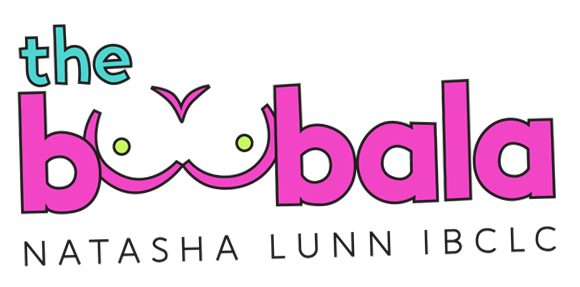Page Content
- How long does it take to build up milk supply again?
- How to tell if breast milk is drying up?
- Does pumping every 2 hours increase milk supply?
- How long do breasts take to refill with milk?
- Will pumping every 2 hours increase milk supply?
- What is the 5 5 5 rule for breast milk?
- Does leaking breasts mean good milk supply?
- Will baby unlatch when breast is empty?
- How long will your body produce breast milk?
- Does breastmilk lose nutrients when pumped?
Understanding Breast Milk Replenishment
Breastfeeding is a dynamic process that involves the intricate interplay of supply and demand. One common question among nursing mothers is: How long does it take for breast milk to replenish after feeding? The answer is nuanced, as it depends on several factors, including the frequency of feeding, the mother’s body, and the baby’s needs.
The Replenishment Timeline
After a breastfeeding session, the replenishment of breast milk typically occurs in stages. According to experts, it generally takes about 20 to 30 minutes for the breasts to generate enough milk for the next feeding. However, for a full replenishment, it can take approximately 60 minutes.
This timeline can vary based on individual circumstances. For instance, if a mother pumps milk shortly after nursing, she may find that her body has about an hour and a half to replenish milk before the next feeding session. This suggests that the body is quite responsive to the demands placed on it, adjusting production based on how often and how much the baby feeds.
The Mechanics of Milk Production
It’s important to note that breasts are never truly “empty.” Instead, they contain varying amounts of milk at any given time. During a feeding, the milk flow may decrease, but there is always some milk available. The initial milk that the baby receives is often referred to as foremilk, which is more watery and quenches thirst, while the milk that follows, known as hindmilk, is richer in fat and calories.
The production of breast milk is largely driven by the principle of supply and demand. The more frequently a baby feeds, the more milk the mother’s body will produce. This adaptive mechanism ensures that the baby receives adequate nutrition, especially during growth spurts when their feeding needs may increase.
Conclusion
In summary, the replenishment of breast milk is a quick and efficient process, typically taking about 60 minutes for full replenishment after a feeding. This remarkable ability of the body to adapt to the needs of the baby underscores the importance of regular feeding and pumping to maintain a healthy milk supply. Understanding this cycle can help mothers navigate their breastfeeding journey with greater confidence and ease.
How long does it take to build up milk supply again?
Don’t set a time frame on it, some mums can get supply up within a few weeks’ others take 6-8 weeks. The breastfeeding journey is different for everyone.
How to tell if breast milk is drying up?
The following are signs your baby isn’t getting enough milk:
- Poor weight gain. It’s normal for newborns to lose 5% to 7% of their birth weight in the first few days – some lose up to 10%.
- Insufficient, wet or dirty nappies.
- Dehydration.
Does pumping every 2 hours increase milk supply?
Pump more often, from both breasts
Many women wonder how often they should pump. A general guideline is to pump every three hours. But if you’re trying to produce more breast milk, you can: Try pumping both breasts for 15 minutes every two hours for 48-72 hours.
How long do breasts take to refill with milk?
about 60 minutes
To put a number on it, it usually takes about 20 to 30 minutes after feeding to generate enough milk for your baby, and about 60 minutes to replenish fully. The more often your baby feeds, and the more they empty your breasts, the more milk your body will produce.’);})();(function(){window.jsl.dh(‘kzNoZ4v_F4_FwPAPlevQkAs__24′,’
Will pumping every 2 hours increase milk supply?
Pump more often, from both breasts
Many women wonder how often they should pump. A general guideline is to pump every three hours. But if you’re trying to produce more breast milk, you can: Try pumping both breasts for 15 minutes every two hours for 48-72 hours.
What is the 5 5 5 rule for breast milk?
Something I recommend to moms is the 5-5-5 rule. Try and use milk within five hours at room temperature, five days in the fridge, and by five months in the freezer.
Does leaking breasts mean good milk supply?
You can leak breastmilk for a variety of reasons including having a full supply, or if your body is not yet sure how much to produce, if your mature milk is starting to come in, if you’ve missed a feeding, or even if you are just thinking about your baby.
Will baby unlatch when breast is empty?
For many babies, being close to mom is a comfort and the motion of sucking is soothing, so they may not unlatch when the breast is empty. If they’re comfortable, they may even fall asleep. If that happens, mom can put a clean finger gently inside the baby’s mouth to break the suction before pulling them away.
How long will your body produce breast milk?
The ability to lactate and the length of time you’re able to produce milk varies. Some can produce milk for years, while others have trouble producing enough milk for their baby. Some common factors that can impact lactation or breastfeeding are: Hormonal levels and conditions.
Does breastmilk lose nutrients when pumped?
According to the CDC (Centers for Disease Control and Prevention), freshly expressed breast milk can be safely kept at room temperature (77°F or colder) for up to 4 hours. Generally, when freshly pumped, breast milk is at its peak regarding nutrients.

